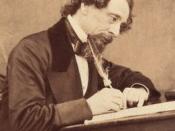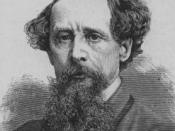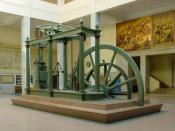Describe the context of Great Expectations (1820s - 1850s)
19th century England, at the time of the setting of "Great Expectations", was characterised by widespread inequality; between genders, social classes and between city and country life. These inequalities became more pronounced as a result of the rapid industrialisation of that period.
Class distinction was a major feature of the era. With increasing industrialisation, the middle class slowly disintegrated, increasing the disparity between the upper and lower classes. The composition of the upper classes deviated from inherited wealth and title as many people became self made wealthy by profiting from the industrialisation, thus the gentry increased in number, as most of these people were formerly of the middle classes. The upper classes did not have to work and lived magnificently, maintaining residences in the city and vast estates in the countryside. Their lives revolved around the social scene, attending balls in the city and hunting trips when in the country.
This was in stark contrast to the lower class. The poor had to work to make a paltry living, including the women, and often, young children. Many lived in work houses, where, people worked all day for a meal and a bed. The rich was indifferent to the poor, while they lived splendidly, the poor lived in slums built around factories, with poor sanitation and terrible conditions. There was little help, except for the very poor, where some parishes had an "overseer of the poor", who provided some basic necessities for the poor.
Not only were there disparities between the classes, but also between genders. Gender inequality between men and women were present throughout time. They were shown by the difference in traditional roles taken on by men and women in these times. Nineteenth century England was a...


